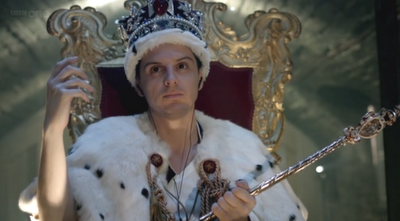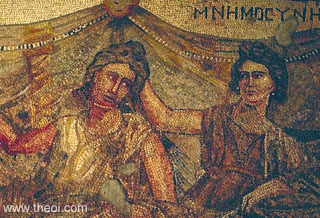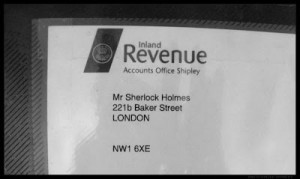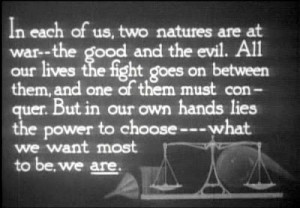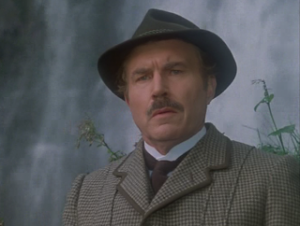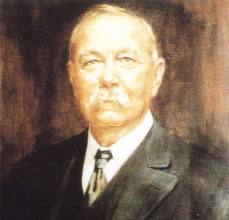Joe Riggs's Blog, page 3
November 10, 2012
Book Review: “The Secret Journal of Dr. Watson” by Phil Growick
Friends, I am excited to begin what shall be a series of reviews. I am currently digesting a slew of Sherlock Holmes related books and will be reviewing each one upon its completion. The first of which is Phil Growick‘s “The Secret Journal of Dr. Watson.”
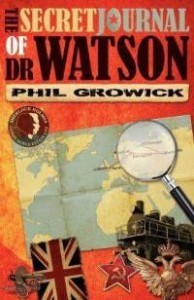 The premise of this book is rather pleasing, one last Holmes adventure chronicled by of course Dr. Watson. However unlike other novels with the same premise, this one stands apart in several ways, all of which are nothing less than enthralling. While elements of the book must be kept secret for the to-be, I can tell you that a descendant of the good Doctor finds himself in possession of this secret journal, and this, is by Dr. Watson’s own design. A wonderful hook right at the start of this book and yet only the beginning of what shall be a most epic journey.
The premise of this book is rather pleasing, one last Holmes adventure chronicled by of course Dr. Watson. However unlike other novels with the same premise, this one stands apart in several ways, all of which are nothing less than enthralling. While elements of the book must be kept secret for the to-be, I can tell you that a descendant of the good Doctor finds himself in possession of this secret journal, and this, is by Dr. Watson’s own design. A wonderful hook right at the start of this book and yet only the beginning of what shall be a most epic journey.
Mr. Growick’s attention to detail and intricate knowledge of geography and world history is staggering, throughout this book we find Holmes and Watson in the middle of a series of world events. Events that due to his superb writing style marry fiction and non-fiction in such a way that you begin to believe that not only did Holmes exist, that he may have had a hand in the course of our natural history. This is a rather pleasant sensation and one that will remain with you throughout the book.
Growick clearly loves to take you down a path, then throw you off the path only to then make you wonder if that path ever existed at all. The ploys, ruses and plots that constantly unfold throughout the book are brilliant, well crafted and nothing less than what we would expect of Holmes. As most of us know I adore the deductions of Holmes and draw many of my conclusions from the authors use of them as well as their plausibility and substance. Phil Growick does not disappoint.
The deductions of Holmes in this book are beyond excellent, extremely engaging and worthy of re-reading quite a few times, I certainly did. However some of the best deductions and moments of logical thinking come to us in a contemplative form. We peer in to see Holmes thought process quite often as he often confides to Watson what is going through his mind. Seeing as how Sherlock is rightfully suspicious of nearly ever character he comes into contact with on this journey, we are fed plenty of well crafted deductions and extremely elegant breakdowns.
As you follow Holmes and Watson through this non stop adventure you find yourself right there with Sherlock, asking questions, developing answers which lead you to even more questions. You begin to read faster, the sound of the turning pages ever increasing like an out of control metronome.
While some books end with a sense of closure, others with a feeling of confusion, this wonderful tale leaves you 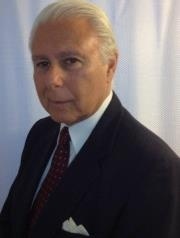 literally begging for just a few more pages. You find yourself examining the back cover closely to see if Mr. Growick has sealed inside some hidden envelope with the answers to a few tantalizing cliffhangers. Something, upon reading his work I would not put it past him to do.
literally begging for just a few more pages. You find yourself examining the back cover closely to see if Mr. Growick has sealed inside some hidden envelope with the answers to a few tantalizing cliffhangers. Something, upon reading his work I would not put it past him to do.
Get this book, download it to your favorite device or sit back on the couch with the paperback copy as I did. However you prefer to read it, just do so and you will not be disappointed. This is an epic journey that spans the time frame of nearly a century. As I sit here typing this I still find myself with the urge to contact Mr. Growick and offer him bribes for an envelope with just one more page in it…
-Joe Riggs
Follow Phil Growick on Twitter.
Buy “The Secret Journal of Dr. Watson” on Amazon.
—————————————————————————————————
Joe’s book (raising funds for Save Undershaw) ‘The Real Sherlock Holmes‘ is available all good bookstores including Barnes and Noble, Amazon, and in all formats including Amazon Kindle and now on the iPad too. Fans outside the US and UK can get free delivery from Book Depository.

October 13, 2012
Inside The World Of Nonverbal Communication – An Interview With Former FBI Spycatcher Joe Navarro.
Joe Navarro – The Spycatcher
Not many can say they were personally approached to join the FBI, but this is exactly what happened to Joe Navarro while he was working as a police officer at the tender age of 23. He accepted their offer and became one of the youngest agents ever to join the renowned investigative agency.
Joe spent the next 25 years at the FBI, working both as an agent and supervisor in the areas of counterintelligence and counter-terrorism Through his work he was able to study, refine and apply the science of non-verbal communications. His acumen in this field and his success as a spy-catcher, led Joe to begin training FBI agents and the intelligence community. Retiring from the FBI in 2003, and meeting overwhelming demand for his notable insights into human behavior, Joe has dedicated himself to speaking and consulting with major corporations worldwide.
Today Joe is recognized as one of the world’s foremost authorities on reading non-verbal communications and he is regularly interviewed on programs such as NBC’s Today Show, Fox News, ABC’s Good Morning America, CBS’ Early Show, and for publications such as The Washington Post and Psychology Today.
———————————————–
Mr. Navarro was kind enough to agree to answering some questions for myself and the readers of this blog. His answers were insightful and delightful in every way, and yes, we even briefly discussed Sherlock Holmes. Let’s jump right into it…
Mr. Navarro, you have spent your life studying, utilizing and teaching the science of nonverbal communication. You spent 25 years in the FBI using your skills to catch spies. You started out as a police officer and were personally approached by the FBI to join, what do you feel it was that caused them to seek you out?
I think at the time the FBI was looking for individuals with certain skills. I had graduated from the Utah police academy and was working as an investigator/detective, I had a pilot’s license, and I had majored in criminology so perhaps one or more of these were things they were looking for. I never asked exactly what it was they were interested in because frankly I was so grateful to get the job offer. It’s not every day they send you an application and ask you to fill it out. In all honesty, I thought 23 was kind of young to be asked to join the Bureau, but I am glad they did and in the end, it worked out but to this day I don’t know what it was they saw in me.
Well it’s more than clear that they made the right choice. So, h ow did your interest in the science of nonverbal communication begin, at what age did you realize you wanted to study this very fascinating subject?
I came to the US as an immigrant and as all immigrants you count on the lingua franca of nonverbals to guide you especially if you don’t speak English, which I didn’t. It wasn’t till I got into law enforcement that I realized everything we do in law enforcement has to do with body language. In fact, I have always wondered why police academies spend so much time on certain subjects when in reality the majority of the time should be spent on how to interview people and interpret body language because in the end, that is all we do, whether you are a street cop, customs officer, or counterintelligence agent.
That’s an extremely good point. So I have to ask, you are known as “Spycatcher” for your years of work for the FBI catching spies, can you give us just one example of how nonverbal communication enabled you to successfully catch a spy?
I was asked to interview an individual who was not suspected of any crime but had merely worked on a military base in Germany where a spy had been arrested. I thought it would be a short interview but after a half hour or so, I asked this person if he knew the name of an individual named Clyde who had worked on that military base (the name of the spy who had been arrested but the public was not aware). When I mentioned Clyde’s name, his cigarette shook in his hands just like a needle on a polygraph machine. I noted it and went on, later I repeated Clyde’s name and sure enough the cigarette trembled once more. That alone told me something was there and in the end, after many interviews, this interviewee confessed to being partners with Clyde in espionage.
Wow, thank you for sharing that story. What a perfect example of how these skills can be used in the right hands!
Your books have been a huge inspiration to myself and my work. My specialty has always been reading people yet your books took me to a whole new level. Since you retired from the FBI in 2003 you’ve been focused on writing and teaching. Do you get a lot of emails and testimonies from people that are using your teachings to empower themselves and their lives?
I love to teach and even while I was in the FBI going back to 1984 I was teaching in one form or another. Over the years people have been very kind in thanking me for either the lectures I have given or the books I have written. I have received letters from Malaysia, Turkey, China, Europe, Australia, Pacific Islands, all over the world, from people thanking me for What Every Body is Saying. For many, that book made it easy for them to understand body language. It is very gratifying because I wrote it due to the fact that I wish I had been taught body language and not like in many of the books that I had to sift through in the 70-80s. What Every Body is Saying is now in 27 languages and is in use with many law enforcement agencies around the world as well as in numerous universities.
That is wonderful to hear, that book alone has been the bible in my house for many years. I could rave about it endlessly and generally do. But I digress.
As most people know my lifelong inspiration has been Sir Arthur Conan Doyle’s beloved fictional consulting detective Sherlock Holmes. He had the uncanny ability to read people in seconds. I can’t help but ask, are you indeed a fan of the Sherlock Holmes stories?
I love the books and I suspect that somewhere along the line those books influenced me either consciously or subconsciously. However, you quickly realize, at least I did, that to have that level of awareness you would have to be not just a world class observer but also an anthropologist, sociologist, ethnographer, chemist, botanist, and so on and I am not any of that. I wish I could decipher cultures as he did. I think that observation skills are key to any profession and so if books inspire us to become better observers even if they are fiction, so much the better. A lot of students ask me what they should study because they want to go into law enforcement. They are surprised when I say that the most useful classes for me in college were in anthropology because it teaches you to observe people, groups, cultures, and behaviors. I have to say that focus was most rewarding in my career.
That is one of the most insightful pieces of advice in this area I think I’ve ever heard. Not all of us can be blessed with the fictional advantage of knowing everything, about everything, haha. Yet the areas you mention are certainly the most advantageous in this department. Thank you.
So, in your opinion how reliable is the reading of body language and non verbals? How much can one really ascertain from reading these unspoken cues?
I think that quite a lot is very reliable, or at least I have found it to be so. Studies have shown that most people are 75% accurate in reading others and you can become quite proficient at deciphering social class, education, background, personality, fears, thoughts, intentions from behavior. That is to say, you are not judging people, you are assessing them to see what it is they are transmitting about themselves. We transmit so much information as any parent will tell you if we but observe. Obviously sometimes we are wrong, but that is why we test and validate in context so we can build on that experience.
What do you feel is one of the most common misconceptions about lie detection, or detecting deception?
In order: That it is easy; that anyone can be trained to do it; That all you have to do is look for micro-expressions; That it’s primarily what law enforcement officers look for. First of all it is not easy. Most people are only accurate 50% of the time, that is a coin toss, even among trained investigators. There are a very few people, perhaps less than 1% that can do it above chance but even then that is or may be only in a laboratory setting. Micro-expressions have become the new fad in nonverbals in the same way that kinesics had notoriety back in the 80s. Micro expressions are rare and even rarer to see because in law enforcement unlike television, most interviews, 97% are done out doors in poor lighting (6pm to 2am is when most police departments are interview active). The fact is that in law enforcement we look for all behaviors from the body and often what we look for is not deception, we expect criminals to lie, but rather what causes them stress. If we ask, “is the money in the house, in the car, in the yard, or in the suitcase,” and they show signs of stress when you cay car, who cares if they lie or don’t answer at all; they just revealed what threatens them, fear of discovery of the money in the car. Most people overrate the detecting of deception in criminal cases. What is more important is detecting information that is of lead or probative value and that often has nothing to do with deception but the stress that is shown when an investigator probes a particular detail.
I could not agree more. I see many experts getting caught up in a current fad or focusing on ‘one’ technique above all others. I love that you put the emphasis on observing every single thing a person is transmitting, not just one technique or area of study. So now for a more fun question that comes from my own personal experiences. When being introduced to new people that are familiar with you and your work, do you encounter the often slightly humorous situation of a person being nervous to talk to you for the first time?
God yes. I often hear the person say, “I am so nervous I don’t know what to do with my hands.” I tell my friends please don’t tell others what I do, introduce me as a parking lot attendant but not as a nonverbal expert.
Ha! I can certainly identify with this. However I don’t think it would take a nonverbal expert to conclude that you’re no parking lot attendant. 
So, apart from your own work and teachings, what direction would you point someone in that wants to get started in the study of nonverbal communication? Who are your inspirations?
Read, read, read. I offer a free nonverbal communications bibliography to those who follow me on twitter (@navarrotells) or who write to me at www.jnforensics.com. There is really no better way – read competent books by authorities on the subject. I have been influenced by Charles Darwin, Desmond Morris, Mark Frank, Maureen O’Sullivan, Joe Kulis, Bella DePaulo, Paul Ekman, David Givens, David Matsumoto, Judee Burgoon, Aldert Vrij to name a few. I hate to make lists like that because you always leave people out and the fact is that many people in law enforcement also helped me to see things that no researcher or scientist will ever see because spies, terrorists, and criminals don’t sign up for lab experiments. I would also caution readers on books that oversimplify the detection of deception; unfortunately there is a lot of junk out there.
Very nice! It’s good to be able to filter out all the ‘fluff’ that’s out there and find the real meat, thanks for that and thank you so much for taking the time to answer a few questions for myself and my readership. The last thing I want to ask you is this: One of the early things I had to learn in the science of reading people is that basing a conclusion or deduction on just ‘one’ signal alone is detrimental to getting a proper read. How much time do you spend establishing a baseline, or, how many ‘signals’ do you need to gather before you feel comfortable making a conclusion. Is there a set art to this area of reading people? To avoid mis-reading a movement or signal…
Life is a movie not a picture. You want to spend as much time as possible with someone where there is no stress so you can get a read on what their normal state is like. Preferably when they are with friends or relaxed. But always remember a person can change attitudes in an instant because of a phone call, a social slight (someone fails to say good morning), or a thought (did I pay my mortgage this month?) which can change a person’s outward appearance in an instant. What we then see has nothing to do with the business at hand but rather with a thought or observation that is now affecting that person. In my own work I have made mistakes in interpreting what I saw and that is why I always try to validate my observations. For example, I once interviewed a woman who was very nervous and looked like she was hiding something. As time moved on she was even more tense more anxious not less, even though I had not gotten deep into the subject of the inquiry. Being the trained professional I thought, surely she has something to hide, I am seeing all the behaviors (neck touching, compressed lips, ventilating of her blouse). When I finally asked her if she wanted to confess to something she had done she said, “No” but she was worried because when she parked her car she only had enough quarters for the meter for a half hour and the meter was going to run out and she didn’t have any more quarters. I read the behaviors right, but it was her fear of getting a ticket that caused the behaviors. In the end, she wasn’t even the right person we were looking for – someone had stolen her identity. So you can read the behaviors right but you need to know context and what is at the root of the behavior. Sometimes you have to ask.
How very true, and what a wonderful example!
———————————————————–
Well friends I hope you found Mr. Navarro’s answers as insightful and informative as I certainly did. I am extremely honored that he took the time to answer a few questions and share his fascinating teachings and perspectives with us. For more information about Joe Navarro and his brilliant books and articles please take a minute and visit the links below:
Joe’s official website: http://www.jnforensics.com
Joe Navarro on Twitter: www.Twitter.com/NavarroTells
Joe’s “Spycatcher” blog at Psychology Today: www.psychologytoday.com/blog/spycatcher
A short video with Joe discussing “The Art of Influence.” http://archive.org/details/JoeNavarrosTheArtOfInfluencemanagerialEdition
Joe’s books, which I HIGHLY recommend to anyone interested in nonverbal communication and speed reading people. Here are a few of my favorites:
What Every BODY is Saying: An Ex-FBI Agent’s Guide to Speed-Reading People
It’s Not All About Me: The Top Ten Techniques for Building Quick Rapport with Anyone by Robin Dreeke
Clues to Deceit: A Practical List
How to Spot a Histrionic Personality
How to Spot a Borderline Personality

Inside The World Of Nonverbal Communication – An Interview With Former FBI Spycatcher Joe Navarro.
 Not many can say they were personally approached to join the FBI, but this is exactly what happened to Joe Navarro while he was working as a police officer at the tender age of 23. He accepted their offer and became one of the youngest agents ever to join the renowned investigative agency.
Not many can say they were personally approached to join the FBI, but this is exactly what happened to Joe Navarro while he was working as a police officer at the tender age of 23. He accepted their offer and became one of the youngest agents ever to join the renowned investigative agency.
Joe spent the next 25 years at the FBI, working both as an agent and supervisor in the areas of counterintelligence and counter-terrorism Through his work he was able to study, refine and apply the science of non-verbal communications. His acumen in this field and his success as a spy-catcher, led Joe to begin training FBI agents and the intelligence community. Retiring from the FBI in 2003, and meeting overwhelming demand for his notable insights into human behavior, Joe has dedicated himself to speaking and consulting with major corporations worldwide.
Today Joe is recognized as one of the world’s foremost authorities on reading non-verbal communications and he is regularly interviewed on programs such as NBC’s Today Show, Fox News, ABC’s Good Morning America, CBS’ Early Show, and for publications such as The Washington Post and Psychology Today.
———————————————–
Mr. Navarro was kind enough to agree to answering some questions for myself and the readers of this blog. His answers were insightful and delightful in every way, and yes, we even briefly discussed Sherlock Holmes. Let’s jump right into it…
Mr. Navarro, you have spent your life studying, utilizing and teaching the science of nonverbal communication. You spent 25 years in the FBI using your skills to catch spies. You started out as a police officer and were personally approached by the FBI to join, what do you feel it was that caused them to seek you out?
I think at the time the FBI was looking for individuals with certain skills. I had graduated from the Utah police academy and was working as an investigator/detective, I had a pilot’s license, and I had majored in criminology so perhaps one or more of these were things they were looking for. I never asked exactly what it was they were interested in because frankly I was so grateful to get the job offer. It’s not every day they send you an application and ask you to fill it out. In all honesty, I thought 23 was kind of young to be asked to join the Bureau, but I am glad they did and in the end, it worked out but to this day I don’t know what it was they saw in me.
Well it’s more than clear that they made the right choice. So, h ow did your interest in the science of nonverbal communication begin, at what age did you realize you wanted to study this very fascinating subject?
I came to the US as an immigrant and as all immigrants you count on the lingua franca of nonverbals to guide you especially if you don’t speak English, which I didn’t. It wasn’t till I got into law enforcement that I realized everything we do in law enforcement has to do with body language. In fact, I have always wondered why police academies spend so much time on certain subjects when in reality the majority of the time should be spent on how to interview people and interpret body language because in the end, that is all we do, whether you are a street cop, customs officer, or counterintelligence agent.
That’s an extremely good point. So I have to ask, you are known as “Spycatcher” for your years of work for the FBI catching spies, can you give us just one example of how nonverbal communication enabled you to successfully catch a spy?
I was asked to interview an individual who was not suspected of any crime but had merely worked on a military base in Germany where a spy had been arrested. I thought it would be a short interview but after a half hour or so, I asked this person if he knew the name of an individual named Clyde who had worked on that military base (the name of the spy who had been arrested but the public was not aware). When I mentioned Clyde’s name, his cigarette shook in his hands just like a needle on a polygraph machine. I noted it and went on, later I repeated Clyde’s name and sure enough the cigarette trembled once more. That alone told me something was there and in the end, after many interviews, this interviewee confessed to being partners with Clyde in espionage.
Wow, thank you for sharing that story. What a perfect example of how these skills can be used in the right hands!
Your books have been a huge inspiration to myself and my work. My specialty has always been reading people yet your books took me to a whole new level. Since you retired from the FBI in 2003 you’ve been focused on writing and teaching. Do you get a lot of emails and testimonies from people that are using your teachings to empower themselves and their lives?
I love to teach and even while I was in the FBI going back to 1984 I was teaching in one form or another. Over the years people have been very kind in thanking me for either the lectures I have given or the books I have written. I have received letters from Malaysia, Turkey, China, Europe, Australia, Pacific Islands, all over the world, from people thanking me for What Every Body is Saying. For many, that book made it easy for them to understand body language. It is very gratifying because I wrote it due to the fact that I wish I had been taught body language and not like in many of the books that I had to sift through in the 70-80s. What Every Body is Saying is now in 27 languages and is in use with many law enforcement agencies around the world as well as in numerous universities.
That is wonderful to hear, that book alone has been the bible in my house for many years. I could rave about it endlessly and generally do. But I digress.
As most people know my lifelong inspiration has been Sir Arthur Conan Doyle’s beloved fictional consulting detective Sherlock Holmes. He had the uncanny ability to read people in seconds. I can’t help but ask, are you indeed a fan of the Sherlock Holmes stories?
I love the books and I suspect that somewhere along the line those books influenced me either consciously or subconsciously. However, you quickly realize, at least I did, that to have that level of awareness you would have to be not just a world class observer but also an anthropologist, sociologist, ethnographer, chemist, botanist, and so on and I am not any of that. I wish I could decipher cultures as he did. I think that observation skills are key to any profession and so if books inspire us to become better observers even if they are fiction, so much the better. A lot of students ask me what they should study because they want to go into law enforcement. They are surprised when I say that the most useful classes for me in college were in anthropology because it teaches you to observe people, groups, cultures, and behaviors. I have to say that focus was most rewarding in my career.
That is one of the most insightful pieces of advice in this area I think I’ve ever heard. Not all of us can be blessed with the fictional advantage of knowing everything, about everything, haha. Yet the areas you mention are certainly the most advantageous in this department. Thank you.
So, in your opinion how reliable is the reading of body language and non verbals? How much can one really ascertain from reading these unspoken cues?
I think that quite a lot is very reliable, or at least I have found it to be so. Studies have shown that most people are 75% accurate in reading others and you can become quite proficient at deciphering social class, education, background, personality, fears, thoughts, intentions from behavior. That is to say, you are not judging people, you are assessing them to see what it is they are transmitting about themselves. We transmit so much information as any parent will tell you if we but observe. Obviously sometimes we are wrong, but that is why we test and validate in context so we can build on that experience.
What do you feel is one of the most common misconceptions about lie detection, or detecting deception?
In order: That it is easy; that anyone can be trained to do it; That all you have to do is look for micro-expressions; That it’s primarily what law enforcement officers look for. First of all it is not easy. Most people are only accurate 50% of the time, that is a coin toss, even among trained investigators. There are a very few people, perhaps less than 1% that can do it above chance but even then that is or may be only in a laboratory setting. Micro-expressions have become the new fad in nonverbals in the same way that kinesics had notoriety back in the 80s. Micro expressions are rare and even rarer to see because in law enforcement unlike television, most interviews, 97% are done out doors in poor lighting (6pm to 2am is when most police departments are interview active). The fact is that in law enforcement we look for all behaviors from the body and often what we look for is not deception, we expect criminals to lie, but rather what causes them stress. If we ask, “is the money in the house, in the car, in the yard, or in the suitcase,” and they show signs of stress when you cay car, who cares if they lie or don’t answer at all; they just revealed what threatens them, fear of discovery of the money in the car. Most people overrate the detecting of deception in criminal cases. What is more important is detecting information that is of lead or probative value and that often has nothing to do with deception but the stress that is shown when an investigator probes a particular detail.
I could not agree more. I see many experts getting caught up in a current fad or focusing on ‘one’ technique above all others. I love that you put the emphasis on observing every single thing a person is transmitting, not just one technique or area of study. So now for a more fun question that comes from my own personal experiences. When being introduced to new people that are familiar with you and your work, do you encounter the often slightly humorous situation of a person being nervous to talk to you for the first time?
God yes. I often hear the person say, “I am so nervous I don’t know what to do with my hands.” I tell my friends please don’t tell others what I do, introduce me as a parking lot attendant but not as a nonverbal expert.
Ha! I can certainly identify with this. However I don’t think it would take a nonverbal expert to conclude that you’re no parking lot attendant. 
So, apart from your own work and teachings, what direction would you point someone in that wants to get started in the study of nonverbal communication? Who are your inspirations?
Read, read, read. I offer a free nonverbal communications bibliography to those who follow me on twitter (@navarrotells) or who write to me at www.jnforensics.com. There is really no better way – read competent books by authorities on the subject. I have been influenced by Charles Darwin, Desmond Morris, Mark Frank, Maureen O’Sullivan, Joe Kulis, Bella DePaulo, Paul Ekman, David Givens, David Matsumoto, Judee Burgoon, Aldert Vrij to name a few. I hate to make lists like that because you always leave people out and the fact is that many people in law enforcement also helped me to see things that no researcher or scientist will ever see because spies, terrorists, and criminals don’t sign up for lab experiments. I would also caution readers on books that oversimplify the detection of deception; unfortunately there is a lot of junk out there.
Very nice! It’s good to be able to filter out all the ‘fluff’ that’s out there and find the real meat, thanks for that and thank you so much for taking the time to answer a few questions for myself and my readership. The last thing I want to ask you is this: One of the early things I had to learn in the science of reading people is that basing a conclusion or deduction on just ‘one’ signal alone is detrimental to getting a proper read. How much time do you spend establishing a baseline, or, how many ‘signals’ do you need to gather before you feel comfortable making a conclusion. Is there a set art to this area of reading people? To avoid mis-reading a movement or signal…
Life is a movie not a picture. You want to spend as much time as possible with someone where there is no stress so you can get a read on what their normal state is like. Preferably when they are with friends or relaxed. But always remember a person can change attitudes in an instant because of a phone call, a social slight (someone fails to say good morning), or a thought (did I pay my mortgage this month?) which can change a person’s outward appearance in an instant. What we then see has nothing to do with the business at hand but rather with a thought or observation that is now affecting that person. In my own work I have made mistakes in interpreting what I saw and that is why I always try to validate my observations. For example, I once interviewed a woman who was very nervous and looked like she was hiding something. As time moved on she was even more tense more anxious not less, even though I had not gotten deep into the subject of the inquiry. Being the trained professional I thought, surely she has something to hide, I am seeing all the behaviors (neck touching, compressed lips, ventilating of her blouse). When I finally asked her if she wanted to confess to something she had done she said, “No” but she was worried because when she parked her car she only had enough quarters for the meter for a half hour and the meter was going to run out and she didn’t have any more quarters. I read the behaviors right, but it was her fear of getting a ticket that caused the behaviors. In the end, she wasn’t even the right person we were looking for – someone had stolen her identity. So you can read the behaviors right but you need to know context and what is at the root of the behavior. Sometimes you have to ask.
How very true, and what a wonderful example!
———————————————————–
Well friends I hope you found Mr. Navarro’s answers as insightful and informative as I certainly did. I am extremely honored that he took the time to answer a few questions and share his fascinating teachings and perspectives with us. For more information about Joe Navarro and his brilliant books and articles please take a minute and visit the links below:
Joe’s official website: http://www.jnforensics.com
Joe Navarro on Twitter: www.Twitter.com/NavarroTells
Joe’s “Spycatcher” blog at Psychology Today: www.psychologytoday.com/blog/spycatcher
A short video with Joe discussing “The Art of Influence.” http://archive.org/details/JoeNavarrosTheArtOfInfluencemanagerialEdition
Joe’s books, which I HIGHLY recommend to anyone interested in nonverbal communication and speed reading people. Here are a few of my favorites:
What Every BODY is Saying: An Ex-FBI Agent’s Guide to Speed-Reading People
It’s Not All About Me: The Top Ten Techniques for Building Quick Rapport with Anyone by Robin Dreeke
Clues to Deceit: A Practical List
How to Spot a Histrionic Personality
How to Spot a Borderline Personality

October 8, 2012
The answer to the riddle, the two winners and my new cryptic riddle weekly series!
Well friends after over 300 entries, hundreds of correct answers and quite a few wrong ones we have our winners! I posted the riddle to my public Facebook page yesterday and within minutes the emails started rolling in. I said the first TWO people that solved it will go live with me at my live web event on Sunday, October 14th. I do have one mention I need to make, Sara Shin correctly answered the riddle first however she is unable to attend the web event so the winners are actually the second and third people to solve it, well done Sara!
As you know every word of the riddle was an anagram so first you had to decipher the riddle before you could solve it. Here is the solution:
The riddle looked like this:
“I veha a knaemicn I natw oyu ot esgsu.
I divel ni eht eplaics esuoh frebeo ts’i sesrtdis.
Ti saw libut sutj rof em edu ot ym plciaes dtniionoc.
Eht fkepeiegasn fo hcwhi sah moceeb tiueq eth sisinom.
Eht ria ni rrusey saw disa ot eb ehialng,
nad rfo inen nogl reyas I yatsed nedur hatt gecniil.
Ryap letl, tahw saw I lacdel?”
The solution to the anagram riddle is this:
“I have a nickname I want you to guess.
I lived in the special house before it’s distress.
It was built just for me due to my special condition.
The safekeeping of which has become quite the mission.
The air in Surrey was said to be healing,
and for 9 long years I stayed under that ceiling.
Pray tell, what was I called?.”
The answer I was looking for is the nickname of Arthur Conan Doyle’s first wife Louise, nicknamed “Touie.“
The winners are Sophia Kea and… ready for this? Maria Fleischhack of the Baker Street Babes!
That’s right one of the Baker Street Babes themselves kicked a** and will be going live with me Sunday. This is going to be a fun event my friends. Sophia Kea is also a wonderful Sherlockian and I look forward to her presence as well! See you guys at the event. One more thing before you go…
I’ve received DROVES of emails from people that love the riddles I’ve done so far and want more, so, I’ve developed an idea for a weekly series! From now on I will be posting a cryptic riddle every Sunday right here on my blog. I will of course share the links on my Twitter and Facebook as well. Each and every riddle will have something to do with Sherlock Holmes, Undershaw or Sir Arthur Conan Doyle. I look forward to writing them and hope you guys continue to have so much fun solving them. Thanks again for all your ongoing support and i’ll see you guys at the event Sunday!
Joe’s book (raising funds for Save Undershaw) ‘The Real Sherlock Holmes‘ is available all good bookstores including Barnes and Noble, Amazon, and in all formats including Amazon Kindle and now on the iPad too. Fans outside the US and UK can get free delivery from Book Depository.

The answer to the riddle, the two winners and my new cryptic riddle weekly series!
Well friends after over 300 entries, hundreds of correct answers and quite a few wrong ones we have our winners! I posted the riddle to my public Facebook page yesterday and within minutes the emails started rolling in. I said the first TWO people that solved it will go live with me at my live web event on Sunday, October 14th. I do have one mention I need to make, Sara Shin correctly answered the riddle first however she is unable to attend the web event so the winners are actually the second and third people to solve it, well done Sara!
As you know every word of the riddle was an anagram so first you had to decipher the riddle before you could solve it. Here is the solution:
The riddle looked like this:
“I veha a knaemicn I natw oyu ot esgsu.
I divel ni eht eplaics esuoh frebeo ts’i sesrtdis.
Ti saw libut sutj rof em edu ot ym plciaes dtniionoc.
Eht fkepeiegasn fo hcwhi sah moceeb tiueq eth sisinom.
Eht ria ni rrusey saw disa ot eb ehialng,
nad rfo inen nogl reyas I yatsed nedur hatt gecniil.
Ryap letl, tahw saw I lacdel?”
The solution to the anagram riddle is this:
“I have a nickname I want you to guess.
I lived in the special house before it’s distress.
It was built just for me due to my special condition.
The safekeeping of which has become quite the mission.
The air in Surrey was said to be healing,
and for 9 long years I stayed under that ceiling.
Pray tell, what was I called?.”
The answer I was looking for is the nickname of Arthur Conan Doyle’s first wife Louise, nicknamed “Touie.“
The winners are Sophia Kea and… ready for this? Maria Fleischhack of the Baker Street Babes!
That’s right one of the Baker Street Babes themselves kicked a** and will be going live with me Sunday. This is going to be a fun event my friends. Sophia Kea is also a wonderful Sherlockian and I look forward to her presence as well! See you guys at the event. One more thing before you go…
I’ve received DROVES of emails from people that love the riddles I’ve done so far and want more, so, I’ve developed an idea for a weekly series! From now on I will be posting a cryptic riddle every Sunday right here on my blog. I will of course share the links on my Twitter and Facebook as well. Each and every riddle will have something to do with Sherlock Holmes, Undershaw or Sir Arthur Conan Doyle. I look forward to writing them and hope you guys continue to have so much fun solving them. Thanks again for all your ongoing support and i’ll see you guys at the event Sunday!
Joe’s book (raising funds for Save Undershaw) ‘The Real Sherlock Holmes‘ is available all good bookstores including Barnes and Noble, Amazon, and in all formats including Amazon Kindle and now on the iPad too. Fans outside the US and UK can get free delivery from Book Depository.

October 4, 2012
The Second Live Mentalism & Deduction Web Event… The Best Is Yet To Come, Save Undershaw!
[image error]That’s right friends it’s time for the second live “Mentalism & Deduction” web event! For those of you who were able to attend my first live web event you’ll know that it went down splendidly and was a special experience not easy forgotten. I held it at the end of this years Sherlock Holmes Week as a way to wrap up the weeks festivities with a bang, and that we did!
Last time I released a cryptic riddle two weeks before the event and the first person to solve that riddle got to go live with me during the event and take part in a very special one-on-one experiment. The results could not have been better, Ms. Laura Anderson went live with me and the results were astonishing for all that witnessed it. Well, we are doing it again the same way, here are the facts:
This Sunday, October 7th I will be posting another slightly complicated riddle to be solved on my public Facebook page at www.Facebook.com/ILikeJoeRiggs. Only this time the first TWO people to solve this will be going live with me during the event to take part in a very unusual Mentalism & Deduction experiment. The riddle will pertain to the Save Undershaw movement in some way, shape or form. That is the only clue you get so keep your eyes on my Facebook page this coming Sunday…
Also, just like last time I intend to bring my friends at Sherlockology and The Baker Street Babes into this as ‘guardians’ so to speak of a prediction I will be making before the event, we did this last time and I can only hope for the results to be as epic as they were the first time around. I will be using every ounce of my knowledge and abilities to make this happen. I will be posting more details about the prediction as they unfold.
During the event I will be sharing some of my core methods and techniques with the viewers, answering questions and [image error]of course executing a couple demonstrations as mentioned earlier. The focus of this event will be straightforward Deduction, The Mind Palace & The Undershaw Preservation Trust.
The link to the live webcast is: http://www.vokle.com/events/76857-joe-riggs-live-mentalism-and-deduction-webcast. Feel free to head on over there and click ‘join’ to RSVP if you so desire. Alternatively you can view and attend the entire event right here on my blog by visiting the “Webcast Event” tab at the top of this page.
Volke emailed me yesterday to tell me that I’ve been chosen as a “Staff Pick” due to the last events success. This time they will be promoting the event themselves and airing commercials for it from now up until the event goes live. We are all expecting a pretty big turnout, so mark your calenders, lock the kids in the closet and grab the computer Sunday the 14th.
I’ll post more details as I get them, keep your eyes on my Facebook page this Sunday for the cryptic riddle and I hope to see each and every one of you present Sunday, October 14th for an experience that will be fun, educational and hopefully… jaw dropping.
-Joe Riggs
“ Come at once if convenient – if inconvenient come all the same” -Sherlock Holmes
Joe’s book (raising funds for Save Undershaw) ‘The Real Sherlock Holmes‘ is available all good bookstores including Barnes and Noble, Amazon, and in all formats including Amazon Kindle and now on the iPad too. Fans outside the US and UK can get free delivery from Book Depository.

The Second Live Mentalism & Deduction Web Event… The Best Is Yet To Come, Save Undershaw!
[image error]That’s right friends it’s time for the second live “Mentalism & Deduction” web event! For those of you who were able to attend my first live web event you’ll know that it went down splendidly and was a special experience not easy forgotten. I held it at the end of this years Sherlock Holmes Week as a way to wrap up the weeks festivities with a bang, and that we did!
Last time I released a cryptic riddle two weeks before the event and the first person to solve that riddle got to go live with me during the event and take part in a very special one-on-one experiment. The results could not have been better, Ms. Laura Anderson went live with me and the results were astonishing for all that witnessed it. Well, we are doing it again the same way, here are the facts:
This Sunday, October 7th I will be posting another slightly complicated riddle to be solved on my public Facebook page at www.Facebook.com/ILikeJoeRiggs. Only this time the first TWO people to solve this will be going live with me during the event to take part in a very unusual Mentalism & Deduction experiment. The riddle will pertain to the Save Undershaw movement in some way, shape or form. That is the only clue you get so keep your eyes on my Facebook page this coming Sunday…
Also, just like last time I intend to bring my friends at Sherlockology and The Baker Street Babes into this as ‘guardians’ so to speak of a prediction I will be making before the event, we did this last time and I can only hope for the results to be as epic as they were the first time around. I will be using every ounce of my knowledge and abilities to make this happen. I will be posting more details about the prediction as they unfold.
During the event I will be sharing some of my core methods and techniques with the viewers, answering questions and [image error]of course executing a couple demonstrations as mentioned earlier. The focus of this event will be straightforward Deduction, The Mind Palace & The Undershaw Preservation Trust.
The link to the live webcast is: http://www.vokle.com/events/76857-joe-riggs-live-mentalism-and-deduction-webcast. Feel free to head on over there and click ‘join’ to RSVP if you so desire. Alternatively you can view and attend the entire event right here on my blog by visiting the “Webcast Event” tab at the top of this page.
Volke emailed me yesterday to tell me that I’ve been chosen as a “Staff Pick” due to the last events success. This time they will be promoting the event themselves and airing commercials for it from now up until the event goes live. We are all expecting a pretty big turnout, so mark your calenders, lock the kids in the closet and grab the computer Sunday the 14th.
I’ll post more details as I get them, keep your eyes on my Facebook page this Sunday for the cryptic riddle and I hope to see each and every one of you present Sunday, October 14th for an experience that will be fun, educational and hopefully… jaw dropping.
-Joe Riggs
“ Come at once if convenient – if inconvenient come all the same” -Sherlock Holmes
Joe’s book (raising funds for Save Undershaw) ‘The Real Sherlock Holmes‘ is available all good bookstores including Barnes and Noble, Amazon, and in all formats including Amazon Kindle and now on the iPad too. Fans outside the US and UK can get free delivery from Book Depository.

August 6, 2012
An amazing end to Sherlock Holmes Week, A lovely mention from Barefoot On Baker Street & more!
Laura went on a curious journey…
Well friends what can I say, Sunday nights live web event could not have went better! Together with the help of everyone that joined in we made something truly special happen. You all did an amazing job coming up with the numbers that would later prove to mean so much more. Four novels, Fifty six short stories the first of which appearing in ’87, 1887. Thanks to everyone who participated, viewed and those still enjoying the recording of happenings. Special guest Laura Anderson took a mental trip and was left with a memento of curious implications. Special thanks to Sherlockology, The Baker Street Babes, Luke Kuhns & MX Publishing for all their support! I’m already thinking of future events…

The Great Debate 3
The Great Sherlock Holmes Debate 3, which took place the day before on Saturday August 5th was in my mind, an equally rewarding experience. I thoroughly enjoyed every single remarkably delivered presentation. Due to recent storms and computer issues, my talk on deduction was delivered brilliantly by Steve Emecx. I had scripted out my presentation in case of computer issues, very happy I did and admittedly it was cool to hear my presentation given in Steve’s wonderful British accent! Ross K will have video soon…
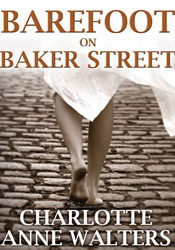 Also very happy to have just been mentioned on Charlotte Anne Walter’s wonderful “Barefoot on Baker Street” blog! She shares her thoughts on The Great Debate Presentations, The Live Web Event and has also just finished and reviewed my book at the same time! Was an extremely pleasant surprise and I look forward to finishing her book. I hope to get a review of this up soon in return.
Also very happy to have just been mentioned on Charlotte Anne Walter’s wonderful “Barefoot on Baker Street” blog! She shares her thoughts on The Great Debate Presentations, The Live Web Event and has also just finished and reviewed my book at the same time! Was an extremely pleasant surprise and I look forward to finishing her book. I hope to get a review of this up soon in return.
Lastly, during my talk at The Great Debate I briefly mentioned the topic of “Microexpressions” a few times, just to let you know that is the subject matter of my next article/lesson, stay tuned for that!
Thanks again so much, all of you!

An amazing end to Sherlock Holmes Week, A lovely mention from Barefoot On Baker Street & more!
 Well friends what can I say, Sunday nights live web event could not have went better! Together with the help of everyone that joined in we made something truly special happen. You all did an amazing job coming up with the numbers that would later prove to mean so much more. Four novels, Fifty six short stories the first of which appearing in ’87, 1887. Thanks to everyone who participated, viewed and those still enjoying the recording of happenings. Special guest Laura Anderson took a mental trip and was left with a memento of curious implications. Special thanks to Sherlockology, The Baker Street Babes, Luke Kuhns & MX Publishing for all their support! I’m already thinking of future events…
Well friends what can I say, Sunday nights live web event could not have went better! Together with the help of everyone that joined in we made something truly special happen. You all did an amazing job coming up with the numbers that would later prove to mean so much more. Four novels, Fifty six short stories the first of which appearing in ’87, 1887. Thanks to everyone who participated, viewed and those still enjoying the recording of happenings. Special guest Laura Anderson took a mental trip and was left with a memento of curious implications. Special thanks to Sherlockology, The Baker Street Babes, Luke Kuhns & MX Publishing for all their support! I’m already thinking of future events…

The Great Debate 3
The Great Sherlock Holmes Debate 3, which took place the day before on Saturday August 5th was in my mind, an equally rewarding experience. I thoroughly enjoyed every single remarkably delivered presentation. Due to recent storms and computer issues, my talk on deduction was delivered brilliantly by Steve Emecx. I had scripted out my presentation in case of computer issues, very happy I did and admittedly it was cool to hear my presentation given in Steve’s wonderful British accent! Ross K will have video soon…
 Also very happy to have just been mentioned on Charlotte Anne Walter’s wonderful “Barefoot on Baker Street” blog! She shares her thoughts on The Great Debate Presentations, The Live Web Event and has also just finished and reviewed my book at the same time! Was an extremely pleasant surprise and I look forward to finishing her book. I hope to get a review of this up soon in return.
Also very happy to have just been mentioned on Charlotte Anne Walter’s wonderful “Barefoot on Baker Street” blog! She shares her thoughts on The Great Debate Presentations, The Live Web Event and has also just finished and reviewed my book at the same time! Was an extremely pleasant surprise and I look forward to finishing her book. I hope to get a review of this up soon in return.
Lastly, during my talk at The Great Debate I briefly mentioned the topic of “Microexpressions” a few times, just to let you know that is the subject matter of my next article/lesson, stay tuned for that!
Thanks again so much, all of you!

July 29, 2012
Special Guest Article: “Some Deep Organising Power” – Professor Moriarty and Doyle’s Imagination
Friends, I am thrilled to share with you this excellent article written by special guest blogger Ray Wilcockson. In honor of Sherlock Holmes Week and The Undershaw Preservation Trust, I thought it would be great to invite Ray to be a special guest and write something fascinating and fun for all of you. He decided to write about Professor Moriarty and Doyle’s imagination, and the following article is absolutely brilliant. Have fun feasting upon this!
“Some Deep Organising Power” – Professor Moriarty and Doyle’s Imagination
Andrew Scott as Jim Moriarty on “Sherlock,” Series Two Finale, The Reichenbach Fall.
Nice PALACE, Sherlock! Mine Now!
I put all your PEGS in one basket.
Hope you MIND

Relax, Joe – it’s only me, Altamont (aka Ray Wilcockson), taking temporary occupation of your virtual throne as Guest Blogger in honour of Sherlock Holmes Week 2012 and the Undershaw Campaign.
“It is always a pleasure to meet an American” (ACD) - especially one who has revived a neglected literary form, the “trifling monograph,” with your new book, “The Real Sherlock Holmes.”
The literary letter (of the kind once written by Dickens and Doyle, Stevenson and Barrie) is another genre worthy of revival. So, my new American friend, I send you, from the homeland of Sherlock Holmes:
AN EPISTLE TO JOE.
Dear Joe,
1. Of Memory & Imagination.
I read your book while considering Conan Doyle’s creation of Moriarty in The Final Problem and observed the inherent importance of imagination in building a memory palace. Your advice to create dramatic, even bizarre images in the mind’s eye reminded me of Holmes’s repeated reference to the importance of imagination.
[image error] Einstein wrote that “logic will get you from A to B. Imagination will take you everywhere.”
America’s great artist, Edward Hopper, noted that “no amount of skilful invention can replace the essential[image error]
element of imagination.”
My hat goes off to those writers like Dickens and Doyle who must (in a pre-electronic age) have developed effective Sherlockian Indexes to organize their busy lives. Consider their Memory Palaces.
[image error]
It seems to me, Joe, that uniquely a writer must house in a special wing products of imagination formed by himself and garnered through reading. Think of those pictures of Dickens surrounded by his characters. It is estimated he invented 963 named characters, all of whom persisted in the imaginative memory. I counted 230 entries in the Who’s Who section of The Sherlock Holmes Companion. And that is only the total for Doyle’s Holmes stories.
Keeping these in some kind of order, maintaining authorial control is a much more difficult feat than retaining knowledge of the kind learned by London taxi-drivers or Dickens himself: “I thought I knew something of the town, but after a little talk with Dickens I found that I knew nothing. He knew it all from Bow to Brentford.” This comment from George Lear, a fellow clerk, was made when Dickens was but 16. Lear also noted Dickens’s powers of observation and love of the theatre.
Mnemosyne.
Memory and Imagination whilst not identical are close relatives. We know this best through the common experience of bereavement where emotional acceptance lags far behind knowledge of the fact of death. The Classical Greeks knew this. At the close of Keats’s Hyperion, the only Titan left alive is Mnemosyne, goddess of Memory and mother of the Muses. She embodies the mythical and emotional memory of a whole race.
2. Of Doyle’s Mind Palace.
Along with all the other calls on a man of unusual energy, multiple interests, a crowded diary and iron self-discipline, I sense, in Doyle’s decision to ‘kill‘ Sherlock Holmes, a timely assertion of personal control. “If I had not killed Sherlock Holmes I verily believe he would have killed me,” echoes Dr. Jekyll’s dilemma. Doyle had been very ill with the killer influenza; in January, 1892, he took a break after finishing The Copper Beeches writing to Mary Doyle:
“poor…Maupassant has written 30 books since 1880, and has now gone mad, so it is bad policy to do too much.”
Perhaps in this age of Sherlock fandom, we omit to observe the effect on the creator when contemplating how some fictional characters are so consummately drawn they are readily believed to be real people.
Letter to Holmes in the Sherlock Holmes Museum.
Doyle had (by his own admission) to be ‘utterly callous…to have a chance of opening out into new fields of imagination‘ for, as Jeremy Brett found (and Cumberbatch will need to address), Holmes can be over-powering if not held in check. For me, The Final Problem is the necessary imaginative enactment of Doyle’s inner struggle with the monster he had brought forth. A balance, a perspective, a pinning down had to be achieved…and,after all, killing a fictional character is not homicide. It is as if the master craftsman returns
the sword blade to the forge for ten long years to achieve a truer Toledo-tempered steel.
When Holmes returns (in Hound of the Baskervilles) it will be by invitation. The physician has healed himself. Dr. Doyle sensed the threat to his burgeoning imagination and sought how best to deal with a personal Mr. Hyde.
This was a crisis of relationship between an artist and his imagination. Ironically, Holmes the hero was very much the villain looming too large in the throne-room of Doyle’s mind palace. The final problem is how best to unseat him.
3. Of Moriarty.
The Hand of Moriarty.
The most interesting (and optimistic) fact about The Final Problem is its very existence. In theory, Doyle might have quietly closed the Canon with The Naval Treaty…and moved on.
David Burke as Dr. Watson as Mnemosyne.
Intuitively, Doyle rejects mere abandonment and instead constructs a legend. Upon Dr.Watson, so naturally, falls the mantle of Mnemosyne, reminiscing in bereavement upon the passing of greatness. Only the Great may defeat the Great and in a mere 2300 words at the center of this story Doyle bodies forth a Nemesis worthy of Holmes.
Fact-seekers may who hunt the alleyways of history for Moriarty models but the answers are already there in the language and construction of Doyle’s text.
There the operative vocabulary , images and structures unite to impy distance, elevation, balance, mind, power, organization, invisibility, inevitability and darkness.
My next Markings post will look in detail at this passage which Doyle places entirely in the narrative voice of the dead detective. By the time Watson has transcribed Holmes’s introductory biography of Moriarty and the detective’s account of their unique meeting in Baker Street, the myth has been unforgettably forged.
4. Of Alchemy.
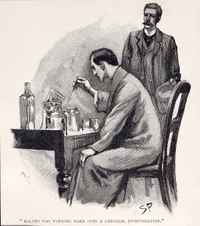 I am sure you delight, as I do, Joe, in those Canonical moments where Holmes conducts some new, ground- breaking (often highly dangerous) experiment.
I am sure you delight, as I do, Joe, in those Canonical moments where Holmes conducts some new, ground- breaking (often highly dangerous) experiment.Literary imagery (by which I mean simile, metaphor, personification and characterization) originates through similar alchemical processes. Images drawn from life, history, nature and reading associate, coalesce and mint novel powerful apparitions hitherto unimagined.
If you ask “Where did Moriarty come from?” I must reply, with Holmes: “Ah! my dear Watson, there we come into those realms of conjecture.“
5. Of Thoth.
At the close of Chapter 12 of The French Lieutenant’s Woman John Fowles intervenes as author to ask: [image error]
“Who is Sarah? From what shadows does she come?“
Chapter 13 is devoted to reminding the reader that novelists are not always in full control of their characters. It is prefaced with this quotation from Tennyson’s Maud (1859):
“For the drift of the Maker is dark, an Isis hid by the veil.”
The statue above features Thoth, Egyptian god of Imagination inspiring the scribe, Nebmeroutef, who, absorbed in his writing, does not return the god’s gaze. The inscription is Keatsian: “Imagination brings back truth.”
Conan Doyle would never read Fowles’s novel of 1969. But he had himself written very recently The Ring of Thoth and Lot 249, short stories of Egyptian horror that feed into the image of Moriarty and inspire, notably, the moving Boris Karloff performance in “The Mummy“ (1932).
Stevenson’s Hyde and Mary Shelley’s Creature also lie behind Professor Moriarty – all three created only for eventual destruction. And behind them all is the over-arching figure of Milton’s Lucifer – hideous, murderous all…yet how we take to them, even empathise and sympathise! How we miss them when they fall! (“Moriarty is real” insist the badges and t-shirts of the faithful).
5. Of the Dark Stranger.
Joe, I begin to outstay my welcome, so I shall bring this epistle to a close by returning you to the post’s title.
Holmes has sensed for years, we understand, “some deep organising power” which surfaced eventually in the person of Moriarty. I sense too, in this most complex, courageous and superbly constructed short story a deeper organising power than Doyle’s conscious artistry.
It is a power that lead Conan Doyle into supreme irony – “killing” Holmes in the short term ensured his immortality. It is the sign of a true artist that he drink from the truth of his imaginative fountain (however unpalatable it may taste).
ACD – THE DARK STRANGER.
AND , guess what, Joe! (irony of ironies) : the name Doyle is from the Scandinavian.. and translates “the dark stranger“. -x-
Ray vacates Joe’s throne, polishes Joe’s pegs, takes a last look round…and closes the Palace doors behind him…
-Ray Wilcockson (@RayWilcockson)
——————————————————————
Wow, that was an absolutely captivating article to read! Thanks so much Ray for your contribution, as well as giving back my throne… Find out more about Ray Wilockson and read more of his amazing writings on his blog “Altamarkings.” -Joe Riggs


